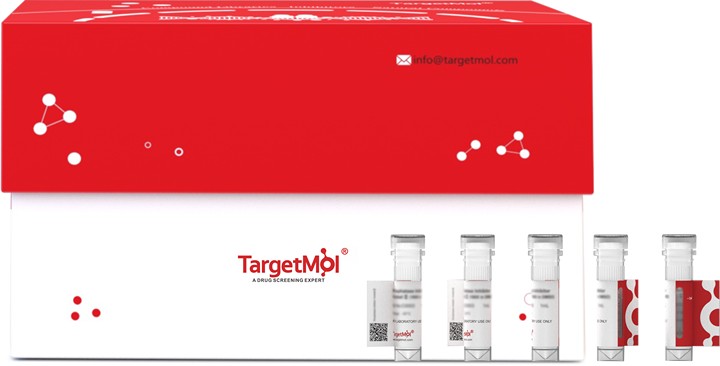购物车
全部删除  您的购物车当前为空
您的购物车当前为空
CD66B Protein, Human, Recombinant (His) is expressed in HEK293 mammalian cells with His tag. The predicted molecular weight is 32.5 kDa and the accession number is P31997.

| 规格 | 价格 | 库存 | 数量 |
|---|---|---|---|
| 5 μg | ¥ 428 | 6-8日内发货 | |
| 10 μg | ¥ 683 | 6-8日内发货 | |
| 20 μg | ¥ 1,130 | 5日内发货 | |
| 50 μg | ¥ 2,270 | 5日内发货 | |
| 100 μg | ¥ 4,430 | 5日内发货 | |
| 200 μg | ¥ 6,730 | 5日内发货 | |
| 500 μg | ¥ 13,800 | 5日内发货 | |
| 1 mg | ¥ 28,800 | 5日内发货 |
| 生物活性 | Human CEACAM-8, His Tag immobilized on CM5 Chip can bind Human CEACAM-6, His Tag with an affinity constant of 4.59 μM as determined in SPR assay (Biacore T200). |
| 产品描述 | CD66B Protein, Human, Recombinant (His) is expressed in HEK293 mammalian cells with His tag. The predicted molecular weight is 32.5 kDa and the accession number is P31997. |
| 种属 | Human |
| 表达系统 | HEK293 Cells |
| 标签 | C-His |
| 蛋白编号 | P31997 |
| 别名 | NCA-95,CGM6,CD67,CD66b,carcinoembryonic antigen-related cell adhesion molecule 8 |
| 蛋白构建 | Gln35-Ser319 |
| 蛋白纯度 | > 95% as determined by Bis-Tris PAGE;
> 95% as determined by HPLC |
| 分子量 | 32.5 kDa (predicted); 60-70 kDa (reducing condition, due to glycosylation) |
| 内毒素 | < 1.0 EU/μg of the protein as determined by the LAL method. |
| 蛋白性状 | Lyophilized powder |
| 缓冲液 | Lyophilized from 0.22μm filtered solution in PBS (pH 7.4). Normally 8% trehalose is added as protectant before lyophilization. |
| 复溶方法 | Lyophilized from a solution filtered through a 0.22 μm filter, containing PBS (pH 7.4). Typically, 8% trehalose is incorporated as a protective agent before lyophilization. |
| 存储 | It is recommended to store recombinant proteins at -20°C to -80°C for future use. Lyophilized powders can be stably stored for over 12 months, while liquid products can be stored for 6-12 months at -80°C. For reconstituted protein solutions, the solution can be stored at -20°C to -80°C for at least 3 months. Please avoid multiple freeze-thaw cycles and store products in aliquots. |
| 运输方式 | In general, Lyophilized powders are shipping with blue ice. |
| 研究背景 | CEACAM8, also known as CD66b or NCA-95, is a single chain, GPI-anchored, highly glycosylated protein belonging to the carcinoembryonic antigen family. There are four members in this family: CD66a, CD66b, CD66c, and CD66d. Members of CEACAM family are widely expressed especially on human neutrophils, and, depending on the tissue, capable of regulating diverse functions including tumor promotion, tumor suppression, angiogenesis, and neutrophil activation. Abnormal overexpression and downregulation of some CEACAMs have been described in tumor cells. Monoclonal antibodies grouped in the CD66 cluster recognize CEACAM members. Ectopic CD66 expression is commonly detected in B-cell lineage acute lymphoblastic leukemia (ALL). CEACAM8(CD66b) is also an activation marker for human granulocytes. However, its biological functions are largely unknown in eosinophils. It has been reported that CD66b is highly expressed on the surface of human peripheral blood eosinophils isolated from healthy individuals. Engagement of CD66b by mAb or a natural ligand, galectin-3, activated a Src kinase family molecule, hemopoietic cell kinase (Hck), and induced cellular adhesion, superoxide production, and degranulation of eosinophils. CD66b molecules were localized in lipid rafts, and disruption of lipid rafts or removal of the GPI anchor inhibited the adhesion and activation of eosinophils. Importantly, CD66b was constitutively and physically associated with a beta2 integrin, CD11b, and cross-linking of CD66b induced a striking clustering of CD11b molecules. Thus, CD66b molecules are involved in regulating adhesion and activation of eosinophils, possibly through their localization in lipid rafts and interaction with other cell surface molecules, such as CD11b. Binding of exogenous or endogenous carbohydrate ligands(s) to CD66b may be important in the release of proinflammatory mediators by human eosinophils. |